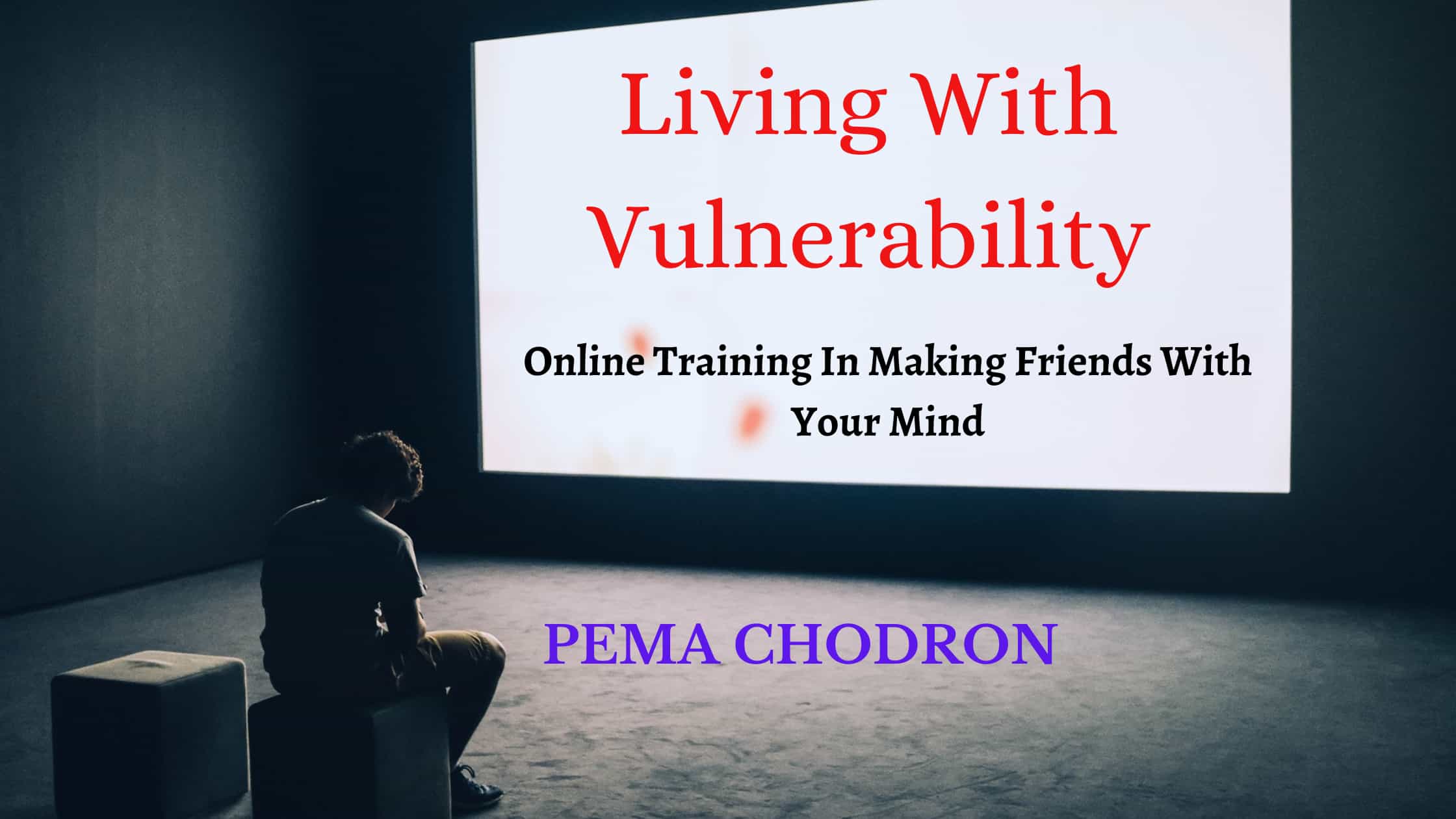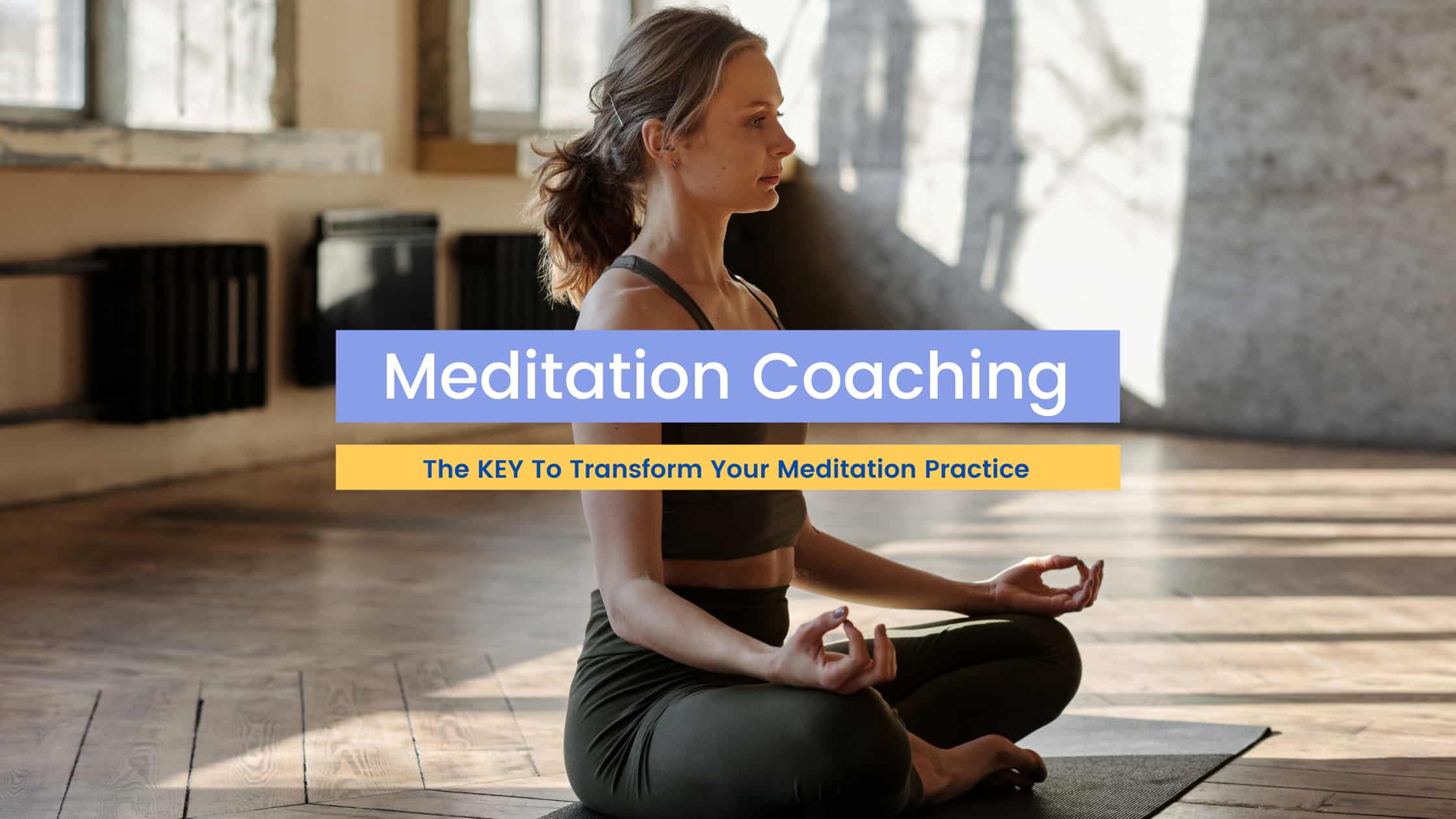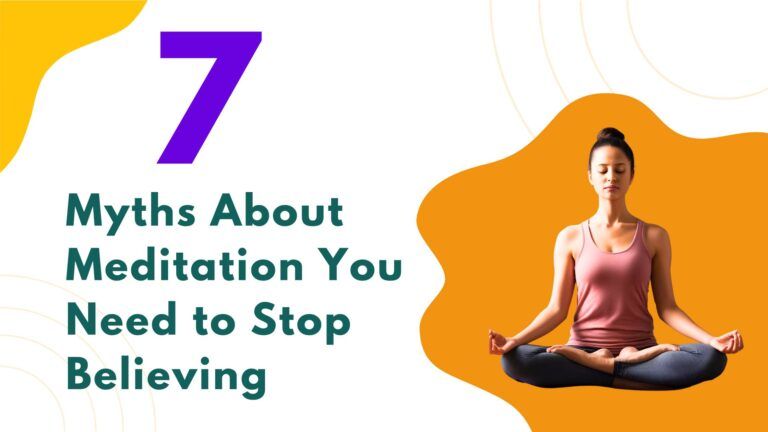Is something holding you back from starting a meditation practice or sticking with it? You’re not alone. There are many myths about meditation that confuse beginners and even discourage them from continuing.
Some people believe you have to empty your mind, sit cross-legged for hours, or feel instant peace for it to “count.” But these ideas are misleading and can make meditation feel harder than it really is.
In this post, you’ll learn the truth behind 7 common meditation myths and discover what meditation is really about. If you’ve been doubting yourself or unsure where to begin, this post will help clear things up and guide you forward with more clarity and confidence.
Myth #1: You Need a Perfect Environment to Meditate
Many people believe that meditation requires a quiet room, soft music, or a peaceful space with no distractions. But the truth is, you don’t need a perfect setting to meditate, you just need a few minutes and a bit of willingness.
You Can Meditate Anywhere
Meditation isn’t about creating a perfect outer world; it’s about learning to be present in whatever situation you’re in. You can practice in your car (while parked), on a noisy train, or even in a busy home. Of course, silence can help sometimes, but it’s not a requirement. Life is rarely quiet, so learning to meditate in real-life conditions is actually more helpful in the long run.
Distractions Are Part of the Practice
It’s natural to hear noises or feel restless during meditation. Instead of trying to block these things out, you can notice them and return your focus to your breath or another point of attention. This helps you build patience and awareness, even in less-than-ideal moments.
Don’t Wait for the “Perfect Time”
Waiting for the perfect moment or environment to meditate often becomes an excuse to delay practice. If you’re always thinking, “I’ll meditate when it’s quiet,” that time may never come. It’s better to start now, even if things aren’t ideal. Over time, your ability to stay centered, no matter what’s happening around you, will grow stronger.
Myth #2: Meditation is About Escaping Reality
Some people think meditation is a way to block out the world or run away from stress. But real meditation isn’t about escaping, it’s about paying closer attention to what’s happening, both inside and around you.
Meditation Helps You Face Reality, Not Avoid It
Rather than tuning out, meditation teaches you how to tune in. You become more aware of your thoughts, emotions, and body. This awareness helps you deal with challenges in a calmer, more thoughtful way. Instead of avoiding difficult feelings, you learn how to notice them without being overwhelmed.
Being Present Makes Life Clearer
When you practice mindfulness, you begin to see things more clearly, how you react to stress, what triggers certain emotions, and how your thoughts shape your day. This isn’t about escaping life but understanding it better. The more present you are, the more grounded and in control you feel.
You Become More Engaged, Not Less
Many people find that meditation helps them enjoy life more, not less. Everyday moments like eating, walking, or talking with someone can feel more meaningful when you’re fully present. Meditation brings your attention back to what matters, instead of pulling you away.
Myth #3: You Need to Sit Cross-Legged on the Floor
Many people picture meditation as someone sitting cross-legged with perfect posture on a cushion. While that’s one way to do it, it’s definitely not the only way. You don’t have to sit on the floor to meditate properly.
Comfort Is More Important Than Position
The main goal is to find a position where your body feels supported but relaxed. You can sit in a chair with your feet flat on the ground. You can lie down if that’s more comfortable (just try not to fall asleep). What matters most is that your posture helps you stay alert and at ease.
Traditional Poses Are Not Required
Sitting cross-legged works for some people, but for others, it can cause pain or discomfort. And that pain can become a distraction during meditation. There’s no need to force yourself into a position that doesn’t feel right for your body. Meditation should support your well-being, not create strain.
Adapt the Practice to Your Needs
If you have physical limitations or injuries, you can still meditate. Use cushions, back support, or even lie on a yoga mat. The point is to find what works best for you. Meditation is flexible and your practice should be, too.
Need support navigating life’s uncertainties? These gentle, powerful programs offer practical wisdom and guided practices to help you find stability in the unknown.



Myth #4: Meditation Takes Hours a Day to Be Effective
A lot of people think they need to spend long hours meditating to see any real benefits. But the truth is, even a few minutes a day can make a big difference.
Short Sessions Still Work
You don’t need to set aside an hour to meditate. Starting with just 5 to 10 minutes a day is enough to begin feeling calmer and more focused. What matters most is consistency. A short daily practice is more helpful than a long session once in a while.
It Fits Into a Busy Schedule
You can meditate during a lunch break, right after waking up, or before bed. You can even practice mindfulness while walking, eating, or doing chores. Meditation doesn’t have to be separate from your life, it can be part of your day in simple ways.
Benefits Build Over Time
Think of meditation like exercise. You don’t get fit in one long workout, you build strength and flexibility over time. In the same way, regular meditation slowly trains your mind to be more aware, calm, and focused. Even short, daily practice can lead to real and lasting change.
Myth #5: You Have to Completely Empty Your Mind
One of the most common misunderstandings about meditation is that you must stop all thoughts and have a totally blank mind. This isn’t true and it’s not even possible for most people.
It’s Normal to Have Thoughts
Your mind will think that’s just what it does. Even experienced meditators have thoughts during their practice. The goal of meditation isn’t to stop thinking but to become more aware of your thoughts without getting lost in them.
Meditation Is About Noticing, Not Controlling
When a thought pops up during meditation, you don’t have to fight it. Just notice it, then gently bring your attention back to your breath or focus point. This simple act of returning your attention is the real heart of meditation.
You’re Still Meditating Even If Your Mind Wanders
Many beginners feel they’re doing it wrong because their mind keeps drifting. But that’s actually part of the practice. Each time you notice your mind has wandered and you bring it back, you’re training your awareness. That’s what makes meditation powerful not having a perfectly still mind.
Myth #6: Meditation is only for Spiritual or Religious People
Some people think meditation is only for monks, yogis, or those who follow a spiritual path. But meditation isn’t limited to any one group it’s a practice that anyone can benefit from.
Meditation Has Many Uses
While meditation has roots in spiritual traditions, it’s also widely used in modern life for mental and physical well-being. Therapists use it to help people manage stress and anxiety. Doctors recommend it to support heart health and better sleep. Athletes and business leaders use it to stay focused and calm.
You Don’t Need to Believe in Anything
There’s no need to follow a religion or hold specific beliefs to meditate. You can approach it simply as a way to train your mind and improve your quality of life. Whether you’re spiritual, religious, or not at all, meditation can still support your goals.
It’s a Tool for Everyone
Meditation is like exercise for the mind it works for anyone who practices it. You don’t have to change your lifestyle, wear special clothes, or join a group. Just take a few quiet moments each day to breathe, focus, and be present.
Myth #7: You’re Not Meditating Properly if You Don’t Feel Calm
Many people believe that meditation should make them feel peaceful right away. So when they feel restless, distracted, or even frustrated during practice, they think they’re doing it wrong. But this is a common misunderstanding.
Meditation isn’t About Always Feeling Calm
While meditation can help you feel more calm over time, the goal isn’t to chase a certain feeling. It’s about noticing what’s happening in the present moment whether that moment feels peaceful or not. Sometimes you’ll feel relaxed, and other times your mind will be busy. Both are okay.
The Practice Is in the Noticing
If you feel anxious or uncomfortable during meditation, that doesn’t mean you’ve failed. In fact, noticing those feelings is part of the practice. You’re learning to sit with whatever comes up without judging it or running away from it.
Progress May Feel Uncomfortable
Growth often happens during the messy moments not when everything feels perfect. Over time, meditation helps you stay steady even when things feel off. So if you don’t feel calm every time you meditate, don’t worry, it still counts, and it’s still helping.
Final Thoughts
Meditation is a simple and powerful practice, but it’s easy to get discouraged by the many myths surrounding it. Whether it’s the idea that you need to sit in silence for hours, empty your mind completely, or feel instantly calm, these beliefs can hold you back from starting or sticking with your practice. The truth is, meditation is flexible, personal, and available to everyone.
By letting go of these common myths about meditation, you can approach it with more ease, patience, and confidence. Start small, stay consistent, and remember: there’s no “perfect” way to meditate, just the way that works for you.
Hope you found this post useful! Ready to take your meditation journey deeper? We’ve got some fantastic programs that could be just what you need.




